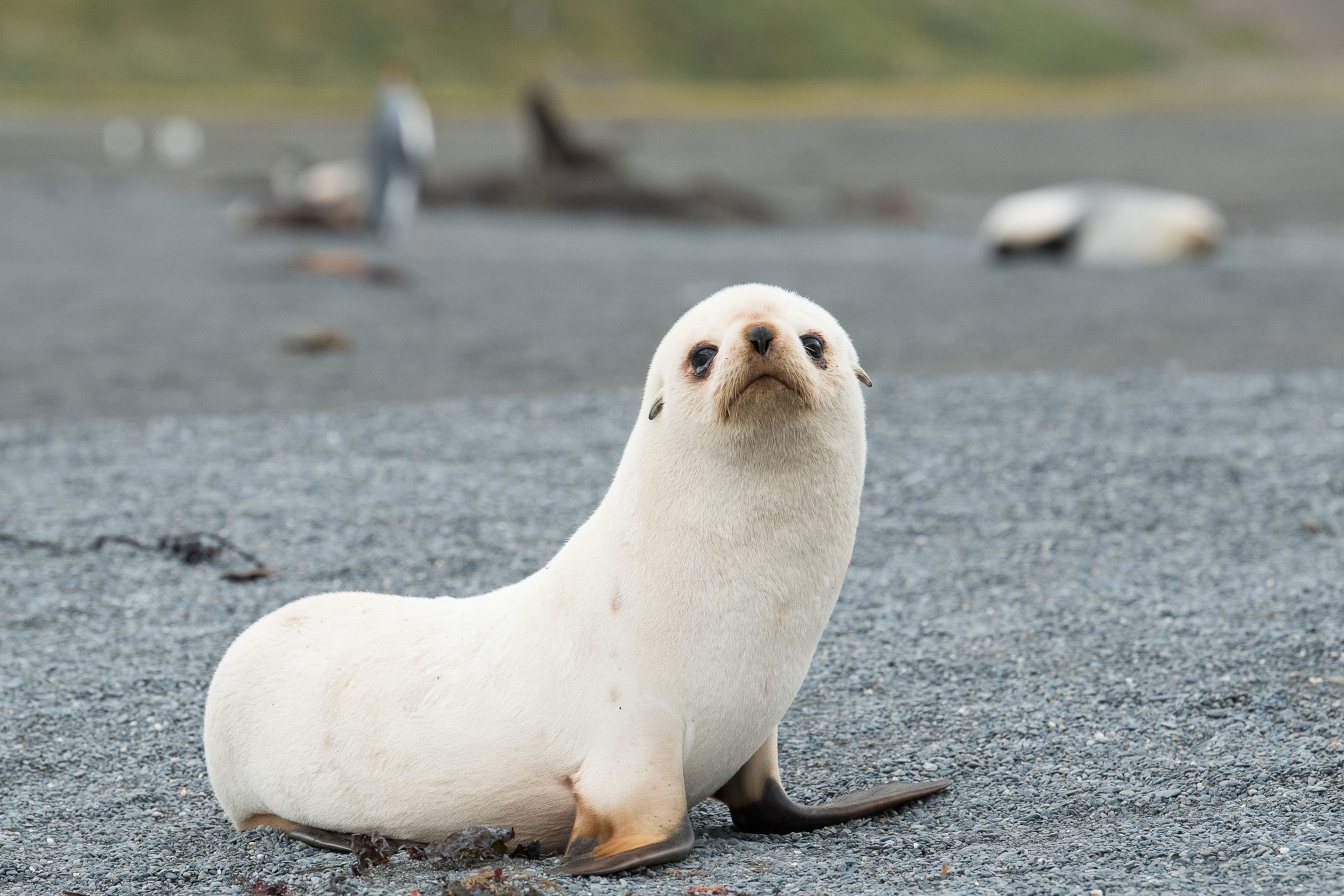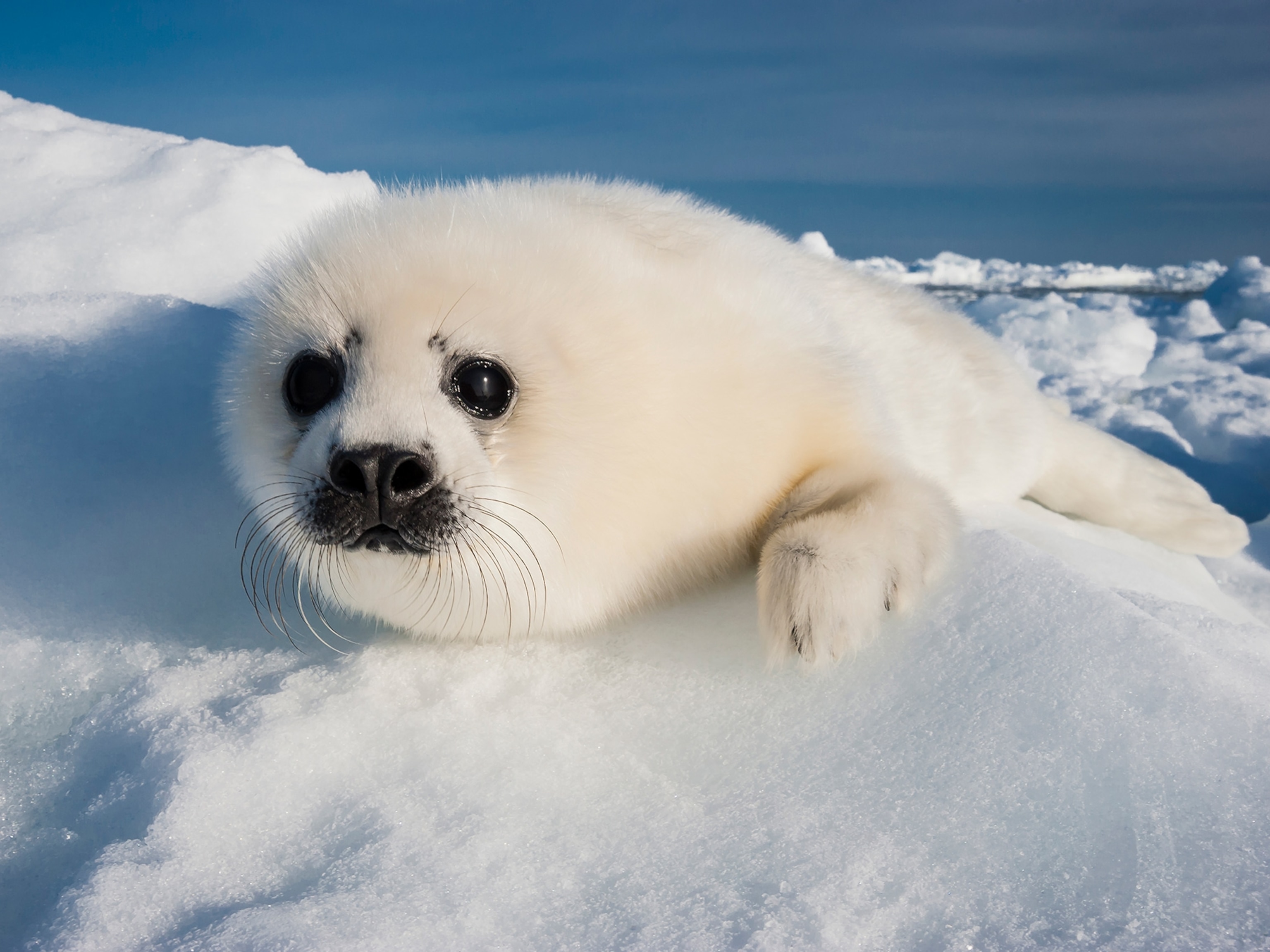Rare pale-colored penguin and seals spotted on remote island
A king penguin and fur seals seen on South Georgia Island have mutations that affect how their bodies make various pigments.

Remote South Georgia Island, about 1,200 miles east of South America’s southern tip, is a seasonal home for only a few dozen humans—but many thousands of seals, penguins, and other creatures.
On a recent National Geographic expedition to the island, photographer Jeff Mauritzen happened upon some animals that were birds of a different feather: A king penguin and fur seals with separate, yet rare, genetic mutations that make them all appear pale.
The striking penguin was spotted on a rainy morning, and as luck would have it, the weather cleared for about ten minutes, just enough time to get some photographs, Mauritzen says.
Like other birds, king penguins can have several mutations that affect how their bodies make pigments. The most extreme of these, albinism, results in a total lack of pigment, totally white bodies, and poor eyesight. (Learn more about albino animals.)
Odd creatures
But most mutations are more mild. In this case, the penguin almost certain has the “brown” aberration. This is caused by a mutation in a recessive gene involved in the production of eumelanin, the pigment responsible for black, gray, and brown colors in feathers, says Hein van Grouw, an ornithologist at the Natural History Museum at Tring, in England.
The mutation causes the incomplete oxidation of the pigment, and makes it sensitive to sunlight, which gradually bleaches feathers until they turn an almost dirty white. (See also: White, albino-like penguin found in Antarctica.)
It also explains why the king penguin’s other colors are just as vibrant. “You can also see that the yellow feathers remained unaffected, as this color is not derived from melanin, but from carotenoids, which are not affected by the brown mutation,” says Júlia Finger, a biologist at Brazil’s University of the Sinos Valley.
Brown is one of the most common types of color mutations in penguins and has been found in several penguin species, such as gentoos, magellanics, and Adélies. But it remains rare.
This mutation affects the Tyrp1 gene, which is located on Z chromosome, equivalent to the human X chromosome. Thus, males can be carriers without showing the mutation, van Grouw explains. “Half of their daughters, however, will be brown, but half of their sons will also be (silent) carriers,” he says by email.

Pale seals
The two fur seals, on the other hand, very likely have a condition called leucism. With this condition, the body doesn’t produce enough of the dark-colored pigment called melanin, and occasionally other pigments as well.
While extremely uncommon in fur seals outside of South Georgia, it is not so strange on the island, with a prevalence of somewhere between 1 in 400 to 1 in 1,500, according to a 2005 study in the journal Polar Biology.
This is likely because the marine mammals were hunted on a massive scale until the early 20th century. Their populations have since rebounded enormously, but it’s likely that a leucistic individual (or two) that survived on South Georgia contributed to the prevalence of this trait there, a phenomenon called the founder effect.
Survival chances
Researchers say that these color mutations usually don’t have a measurable impact on survival or behavior.
Indeed, as Mauritzen notes, the penguin and the seals he photographed didn’t seem to act at all unusual, and didn’t seem to be treated differently by others. (See more pictures of albino or unusually white animals.)
“In my opinion most color mutations do not affect the survival rate of an individual much and many aberrant-colored individuals live for a long time in the wild and are mated with normal-colored partners and do produce offspring,” van Grouw says.
Finger agrees, though adds that if color mutations affect an animal’s mimicry abilities—and skill at blending in, useful for catching prey or avoiding becoming preyed upon—then survival chances drop.
“However,” she says, “I found that most birds can cope well with their color mutations and are well accepted among their peers.”





